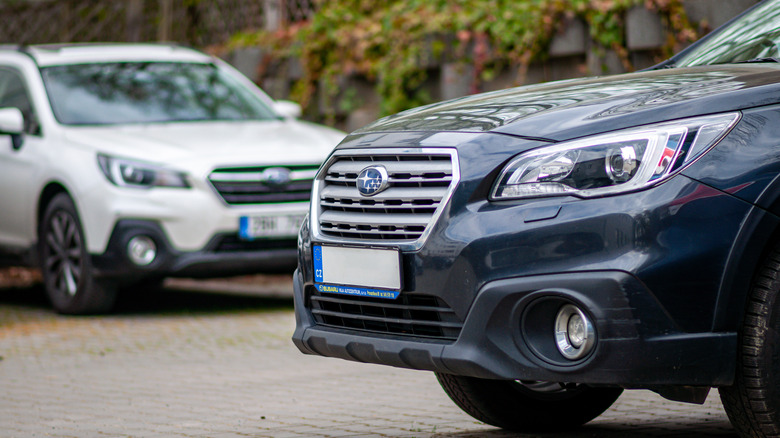
Jan Zabrodsky/Getty Images
Subaru is known for making off-road lifestyle vehicles, and they offer two crossover SUVs at a similar price point — the Outback and the Forester. So, if you’re shopping for a new Subaru SUV, you might be a bit confused as to what are the differences between the Outback and the Forester and which should you get.
Advertisement
Both cars have a sub-$30,000 base price, while their top trims land between $39,995 and $42,795. The $2,800 difference for the highest variants might be a bit steep if you’re paying for it in cash, but this is a tiny difference if you will finance or lease the car. Furthermore, the priciest Subaru Outback has a different engine. If you pick the top Outback variant that has the same engine as the Forester (which only has one engine option), the most expensive Outback trim would be $40,345, which is only a $350 difference from the most expensive Forester.
With that in mind, let’s look at both models and check out their differences. From there, we will answer a couple of questions which will hopefully help you make up your mind. That way, you can get the Subaru crossover SUV that will fit your lifestyle best.
Advertisement
What is the Subaru Outback?
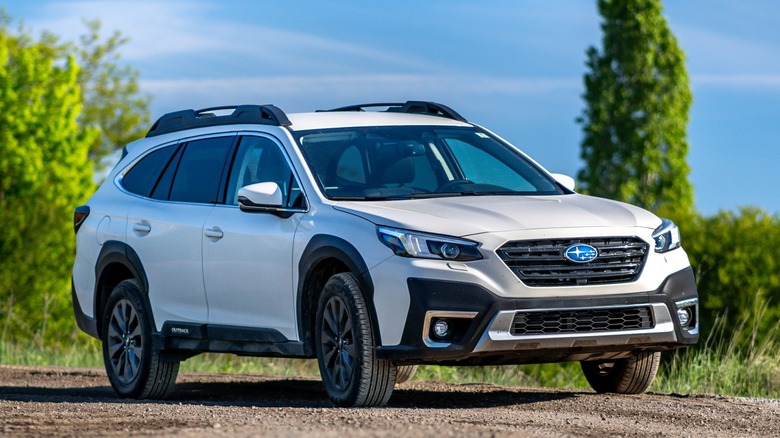
Jan Zabrodsky/Shutterstock
The Outback was originally built on the platform of the mid-size Subaru Legacy, which, unfortunately, is being discontinued in the U.S. in 2025. Nevertheless, the Subaru Outback continues to be a popular wagon-style vehicle in America, with a new model expected to arrive in 2025.
Advertisement
One of the reasons that the Subaru Outback remains so popular is that it’s a great all-around vehicle. It can do some light off-road adventures with the Subaru Symmetrical All-Wheel Drive while still being a comfortable car to drive around in the city. At the same time, if you like going out of the city and into the wild much more frequently, Subaru offers the Wilderness trim package to cater to your tastes.
More than its off-road capabilities and around city comfort, the size of the Subaru Outback also makes it ideal for small families. It has quite a spacious interior, so even if the kids have grown taller, they won’t complain about the lack of legroom in the back seats. You can also pile in all the stuff you need when you take a trip thanks to its generous cargo compartment.
Advertisement
What is the Subaru Forester?
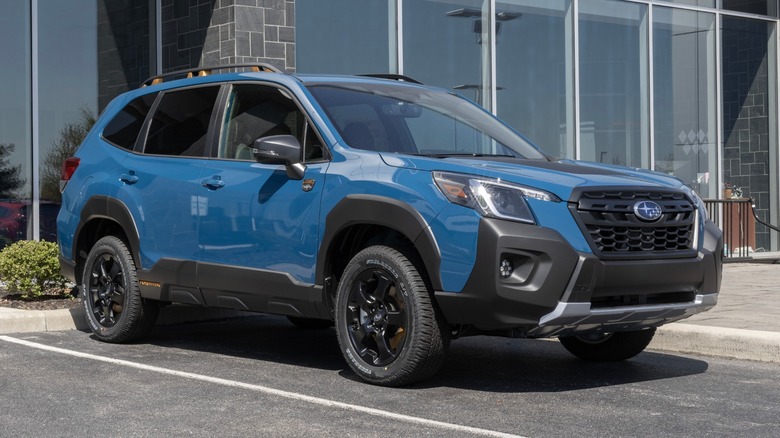
Jonathan Weiss/Shutterstock
Just as the Outback was built on the Legacy platform, the Forester was built on the smaller Subaru Impreza chassis. However, the Forester has grown in size so much that it now rivals the Outback. The current Subaru Forester was introduced just this year, so if you pick this car, you’re getting a fresh model.
Advertisement
Unlike the Outback, which has a more station wagon feel, the Forester was one of the first crossover SUVs on the market and is still primarily built as one. This gives it a sportier off-road stance than the former. Despite that, you still get car-like comfort with the Forester — something I can attest to, having owned one from 2019 until last year.
Another thing that makes the Forester such a popular option is its excellent safety features. Aside from the full-time AWD system that all Subaru Foresters come with, the brand itself is also known for its excellent safety record, making the Forester one of the top picks of buyers who want an SUV but are also concerned about road safety.
Do you want turbo power?
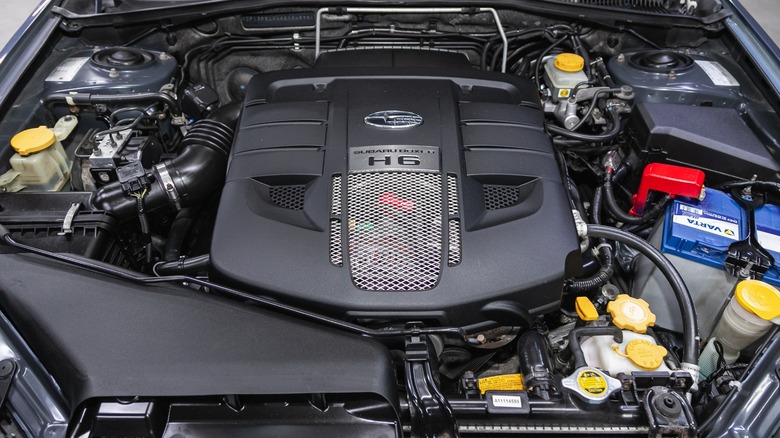
Everyonephoto Studio/Shutterstock
Most users buy a Subaru because of its comfort and off-roading capabilities. Nevertheless, the car brand also had a colorful history in rally racing, especially as the Subaru Impreza WRX faced off with the Mitsubishi Lancer Evolution in the World Rally Championship throughout the 90s. So, if you want more power, your only current option would be the XT variants of the Subaru Outback.
Advertisement
While the Forester did receive turbocharged engines in the past, the current lineup only features a 2.5-liter naturally aspirated engine that produces 180 hp and 178 lb.-ft. of torque. The non-turbo variants of the Outback also have the same engine but with a slightly tweaked output — 182 hp and 176 lb-ft of torque. However, despite having the same engine and nearly the same outputs, the Forester can only pull 1,500 lbs. while the naturally aspirated Outback has a maximum towing capacity of 2,700 lbs.
However, if you choose the XT or Wilderness trims of the Subaru Outback, you’ll be getting a 2.4-liter turbocharged engine, putting out 260 hp and 277 lb-ft of torque. Aside from the increased power output, this also pushes the cars towing capacity to 3,500 lbs., allowing you to haul substantially heavier trailers.
Advertisement
Do you need a larger car?
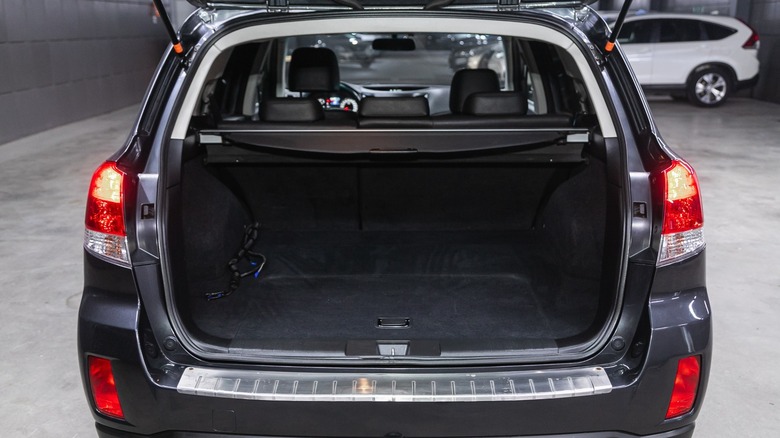
Everyonephoto Studio/Shutterstock
The Outback is a substantially larger car than the Forester, especially if you look at its exterior dimensions. The Outback measures 191.9 inches long, 74.2 inches wide, and about 66 inches tall. On the other hand, the Forester is only 183.3 inches long, 72 inches wide, and about 68 inches tall. This makes the Forester at least 8.6 inches shorter externally.
Advertisement
However, you would barely feel this if you’re a passenger or driver. That’s because both cars give almost the same amount of space to its occupants: the Outback offers 42.8 inches of legroom in the front and 39.5 inches in the back, giving a total passenger volume of 107.5 cubic feet. On the other hand, the Forester gives 43.3 inches up front and 39.4 inches for the rear passengers, with a total passenger volume of 106.6 cubic feet.
These are just small differences, so both cars will offer almost the same level of passenger comfort. However, you will notice the advantage that the Outback brings with its cargo volume. The Forester only offers 27.5 cubic feet in its cargo compartment, with its capacity jumping to 69.1 cubic feet if you fold the rear seats. However, if you pick the Outback, you’ll get 32.6 cubic feet of cargo space, which will balloon to 75.6 cubic feet with the rear seats lowered.
Advertisement
Do you prefer a more luxurious ride?
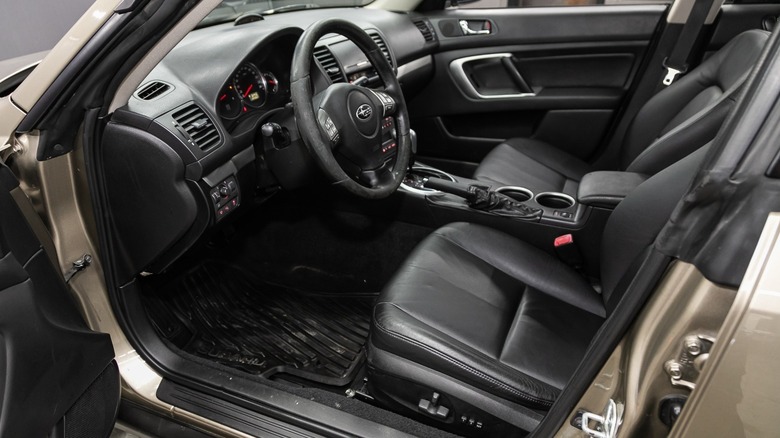
Everyonephoto Studio/Shutterstock
Both the Outback and Forester are great cars that offer excellent comfort for its passengers. However, if you want to treat yourself to some of the finer things in life, you should go for the former. For example, you can only get ventilated seats on the top-trim of the Outback, as those are not an option at all for the Forester. The Outback Limited and Touring variants also get 12-way power seats, compared to Forester’s 10-way.
Advertisement
The Outback also gets hands-free power rear gate on all trims, while it’s only available on the Forester Limited and Touring. In addition, some features such as an auto-dimming rearview mirror come standard on the Outback, while they are options that cost extra on the Forester. Finally, if you plan on taking your family on long trips, they will appreciate the eight cup and bottle holders on the Outback, while the Forester only has four.
These features might be small in the grander scheme of things, but it’s the small things that count, after all. Both the Forester and Outback are great options, they both have trims that fill the same price point. If you’re looking for a car that you can easily drive around and, but you can also take on adventures, you won’t go wrong with a Subaru. Unless you feel strongly about engine power, cargo space, or small luxuries, the Forester is just as strong of an option as the Outback.
Advertisement